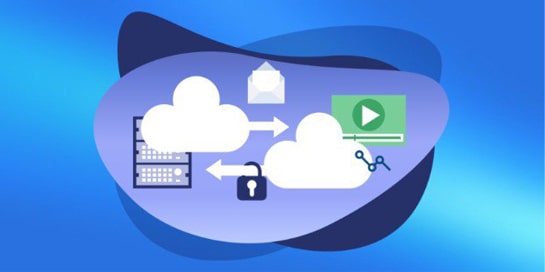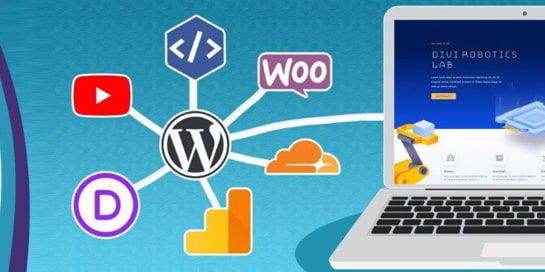Planning a business information technology infrastructure is a complex process involving a number of tasks that must be completed in stages. And one of the first is the choice of server software, in particular its operating system (OS). The convenience and security of the data storage system, the possibility of scaling largely depends on it.
Server operating systems are a heavier weight category compared to desktop ones, in which Windows and Linux have been fighting for leadership for many years. It is not easy for a beginner to choose between two operating systems: Linux is free, with a variety of distributions, and Windows supports several specific technologies and DBMS.
Let’s take a closer look at the main types of server operating systems, as well as the criteria that a business should consider when choosing the right operating system for a server.
The most popular operating system options
The operating system is a set of programs that performs the relationship between the hardware and the user. It provides a set of services for programs, graphic and text applications, databases, spreadsheets, web browsers, etc. Unlike the OS of conventional computers, server systems require much more memory to perform calculations. Additionally, they can cope with the duties of an Internet server, software server, e-mail and other nodes, without which the IT infrastructure of a business cannot function. With the help of a server operating system, a large number of users are connected to the Internet or a local network.
It is not possible to unambiguously answer which server OS to choose. It is necessary to navigate the offers of the market and choose the option that will best meet your requirements.
The most common server OS options are:
- FreeBSD
- Windows Server
- CentOS
- Debian
- Red Hat
Let’s take a quick look at these server operating systems.

FreeBSD
FreeBSD is one of the oldest variants of server operating systems. Despite its reliability and high level of security, it is still gradually losing its place in the market. And one of the main reasons is very low investment in development. This OS offers users a small list of commercial software, because the company has only one development team.
Today, the 10 version of the OS is presented on the market. It is used in many processor architectures. The main advantages are well-implemented work with memory, information input / output system, network. And if the IT specialist of your company is well versed in it, he will be able to fine-tune the core to the specifics of the business as accurately as possible.
Windows Server
Windows Server OS is a member of the Windows Network family of networking software developed by Microsoft at the same time as the conventional Windows 10 operating system.
Its advantages include:
- high performance margin
- a huge amount of software available for download
- high level of security (applies to both protection against malware and attacks on virtual machines)
- the possibility of individual software development (provided by support for Kubernetes containerization, wide opportunities for scaling)
- work with Windows Subsystem for Linux: allows you to develop software for the Linux operating system, including virtual machines
Server OS Windows Server is optimally suited for interaction with diverse software, file, mail servers.
But the security level of the Windows server OS leaves much to be desired. Along with free software, it is easy to catch a virus program. You also need to know that this OS works exclusively under a license. And if there are literally a couple of small servers in your office, then buying Windows Server OS for them is not a very reasonable solution. The disadvantages also include higher requirements for the hardware component. It will not work on classic 32-bit architectures.
Debian
Debian is one of the Linux distributions. The system is being actively developed. Such features of Debian server operating systems as versatility, stability, reliability are attracting more and more attention from users. Today, this operating system boasts the largest repository of software and libraries. Also, the features of the Debian OS include:
- support for different processor architectures: from the simplest to the most powerful
- using a content hash to load documents with metadata
- APT SRV records are used to identify the loading backend in DNS
- support for advanced technologies, including PHP, Python, JAVA, the versions of which depend on the version of the OS itself
There are versions for both regular user and server machines. It can also be used on Internet application and host servers, terminals, etc.
Red Hat
Rad Hat is another variant of the Linux-based operating system. First appeared on the market in 2003. This system is based on open source software with free code. But there is also a paid RHEL binary (assumes support for 10 years). All adjustments that are introduced to Linux are immediately implemented in the next versions of the Rad Hat server operating system.
In practice, it has found the greatest application in corporate networks, when working with hybrid clouds. With its help, it is convenient and profitable to deploy large-scale projects. It is actively used in the telecommunications industry, on stock exchanges in large financial institutions.
CentOS
This is the third Linux distribution in our selection. The functions of the CentOS server OS are very similar to those of Red Hat, but here it is focused not on commercial, but on private users. The system is completely free. At the same time, easy access to the YUM package manager is provided, there is support for the most popular hosting control panels. Today, many software products are provided on this OS: Scientific Linux (for scientific laboratories), SME Server (for small and medium-sized businesses), Boston University’s (for educational institutions), ClearOS (household and small commercial routers), etc.
But you should understand that the product is free. And this means that you can not count on fast technical support. Therefore, most of the problems that arise in the workflow will have to be solved independently.
Other popular server operating systems include Ubuntu, SUSE Enterprise Linux Server, Oracle Linux Server, ClearOS, macOS Server, etc.
Main selection criteria
To choose the best version of the operating system, you need to understand what criteria you should focus on first. So, the main requirements for the server OS:
- High reliability. The operating system must ensure the stability of the software, effectively perform the tasks set by the user.
- Sufficient frequency of updates. The more often new versions or additions to existing ones are published, the relevance and efficiency of the OS depends.
- Price. A reasonable desire is to use a stable, reliable operating system for free or for little money. But, good products with 24/7 technical support are not cheap. Therefore, the user needs to choose an option that will satisfy his needs, including the price.
- High level of security. We are talking about protection from hacker attacks, the presence of a backup, etc.
Ease of use. A simple, thoughtful interface provides ease of setup and subsequent administration.
There is no universal operating system that would be ideal for any business task. It is necessary to navigate in its specifics, determine the key requirements and, based on them, select the optimal solution. Regardless of which OS you choose for your business, it’s important to make sure you properly configure and secure your server to keep your system secure and reliable. Some of the most important steps to take include installing the required updates, setting up a firewall, and using strong passwords and authentication mechanisms.
Regardless of which OS you choose, remember that each has its own advantages and disadvantages. Analyze your business requirements and needs and choose the best OS for your needs. Contact the experts if you need help choosing and configuring a server OS.

VPS Linux
VPS hosting with KVM virtualization



